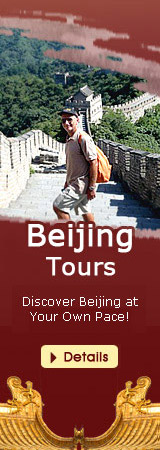The Niujie Mosque is the oldest mosque in Beijing and one of the major mosques in north China. Located the Guang'anmen Area in Beijing, it was originally built by Nasruddin, the son of an Arabic priest who came to China to preach the Islamic faith in 996 during the Northern Song Dynasty (960 - 1127). The mosque was rebuilt in 1442 in the Ming Dynasty (1368 - 1644) and expanded in 1696 during the Qing Dynasty (1644 - 1911).
The Islamic faith was introduced into China during the Tang Dynasty (618 - 907) and now has followers among more than 10 Chinese ethnic groups, including the Hui, Uygur, Uzbek and Kazak. The Niujie Street in Xuanwu District, where the mosque is located, is the largest area inhabited by Muslims in Beijing. Also, the Niujie Mosque is the site of the China Islamic Association.
Coving an area of approximately 6,000 square meters (about 1.5 acres), the mosque is a mixture of Islamic and Chinese cultures. From the outside, its architecture shows traditional Chinese elements while the inside has mostly Islamic decorations. Built out of timber, the mosque is home to some important cultural relics and tablets including the upright tablet of an emperor's decree proclaimed in 1694 during the Qing Dynasty.
Inside the front gate stands a hexagonal structure known as the Moon-Watching Tower. In front of the tower are a memorial archway and a screen wall covered with carved murals, which together form the main entrance of the mosque. Beyond it is the main hall where the congregation comes to pray. According to Islamic tradition, a Muslim in prayer must kneel down and prostrate himself in the direction of Mecca (in Beijing, to the west), which explains why the facade of the main hall has an eastern aspect.
To the rear of the main hall is a group of small religious halls and stela pavilions designed in the Islamic style. Since the teaching of the Koran forbid the portrayal of human or animal forms, the designs and patterns in all of the decorations are composed of Arabic letters and geometrical patterns. In the center of this section is the minaret, from which the muezzin calls the faithful for prayers five times a day, beginning at dawn.
In the innermost courtyard of the compound are a number of auxiliary buildings, including classrooms for religious training. Especially, there is a very large bathhouse used for religious ablutions in the southern part of the compound.
The Niujie Mosque has undergone three renovations since the founding of the People's Republic of China in 1949, respectively in 1955, 1979 and 1996.
![]() Entrance Fee: CNY 10
Entrance Fee: CNY 10
![]() Opening Hours: 08:00 - 16:00
Opening Hours: 08:00 - 16:00
![]() Bus Routes:
Bus Routes:
A. Take Bus No. 10, 48, 626 or 717 and get off at Niujie Mosque Station.
B. Take Bus No. 5, 6, 38, 57, 109 and get off at Niujie crossing west.
C. Take Bus No. 10, 48, 626, 717 and get off at Niujie crossing south.








